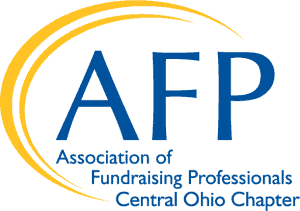Giving USA 2017: Charitable Giving in the U.S. Reaches $390 Billion
Giving by individuals, foundations, corporations and estates rose by 2.7 percent in 2016 (1.4 percent adjusted for inflation) to reach an all-time high of $390.05 billion, according to Giving USA 2017: The Annual Report on Philanthropy for the Year 2016.
The rise in total giving was spurred largely by giving from individuals, which increased nearly 4 percent in 2016. Giving by individuals grew at a higher rate than the other sources of giving, outpacing giving by foundations and by corporations, and offsetting the sharp decline in bequests.
“Individual giving continued its remarkable role in American philanthropy in a year that included a turbulent election season that reflected a globally resurgent populism,” said Amir Pasic, Ph.D., the Eugene R. Tempel Dean of the Lilly Family School of Philanthropy. “In this context, the absence of a dramatic change in giving is perhaps remarkable, but it also demonstrates the need for us to better understand the multitude of individual and collective decisions that comprise our record of national giving.”
Charitable Giving by Source
- Giving by individuals totaled an estimated $281.86 billion, rising 3.9 percent (2.6 percent adjusted for inflation) in 2016.
- Giving by foundations increased 3.5 percent (2.2 percent adjusted for inflation) to an estimated $59.28 billion in 2016. Data on foundation giving are provided by Foundation Center.
- Giving by bequest totaled an estimated $30.36 billion in 2016, declining 9.0 percent (10.1 percent adjusted for inflation) from 2015.
- Giving by corporations is estimated to have increased by 3.5 percent (2.3 percent adjusted for inflation) in 2016, totaling $18.55 billion.
“In 2016, we saw something of a democratization of philanthropy,” said Patrick M. Rooney, Ph.D., associate dean for academic affairs and research at the Lilly Family School of Philanthropy. “The strong growth in individual giving may be less attributable to the largest of the large gifts, which were not as robust as we have seen in some prior years, suggesting that more of that growth in 2016 may have come from giving by donors among the general population compared to recent years.”
Long-Term Giving Factors
While the political climate may play a role in some donors’ decisions to give to charity, research conducted by the Indiana University Lilly Family School of Philanthropy and others has long demonstrated that aggregate giving trends are influenced by large-scale economic factors. These factors ultimately affect the economic and financial circumstances of all types of donors and, therefore, their ability to give.
As an example of the link between the economy and charitable giving trends, giving by individuals has historically correlated with changes in such national-level economic indicators as personal consumption, disposable personal income and the Standard & Poor’s 500 Index. All of these factors are associated with households’ permanent and long-term financial stability.
In 2016, helping to increase giving by individuals and households, both personal consumption and disposable personal income grew by nearly 4 percent over 2015. The S&P 500 finished the year up 9.5 percent after uneven performance for much of 2016 and a mixed economic picture in 2015.
Charitable Giving to Recipients
2016 differed significantly from recent giving years, according to Una Osili, Ph.D., director of research at the Indiana University Lilly Family School of Philanthropy. “While giving to arts, health and the environment experienced significant growth, giving to education saw relatively slower growth. In most years, giving to education, arts and culture and health organizations often experience similar changes in growth rates, but in 2016 arts and health giving are both notably higher than giving to education. Giving for international affairs also saw growth even though there were lower levels of giving for disaster relief.”
For just the sixth time in 40 years, giving to all charitable subsectors analyzed by Giving USA saw increases:
- Giving to religion increased 3.0 percent (1.8 percent adjusted for inflation), with an estimated $122.94 billion in contributions.
- Giving to education is estimated to have increased 3.6 percent (2.3 percent adjusted for inflation) to $59.77 billion.
- Giving to human services increased by an estimated 4.0 percent (2.7 percent adjusted for inflation), totaling $46.80 billion.
- Giving to foundations is estimated to have increased by 3.1 percent (1.8 percent adjusted for inflation), rising to $40.56 billion.
- Giving to health organizations is estimated to have increased by 5.7 percent (4.4 percent adjusted for inflation), to $33.14 billion.
- Giving to public-society benefit organizations increased by an estimated 3.7 percent (2.5 percent adjusted for inflation) to $29.89 billion.
- Giving to arts, culture, and humanities is estimated to have increased 6.4 percent (5.1 percent adjusted for inflation) to $18.21 billion.
- Giving to international affairs is estimated to be $22.03 billion in 2016, an increase of 5.8 percent (4.6 percent adjusted for inflation).
- Giving to environment and animal organizations is estimated to have increased 7.2 percent (5.8 percent adjusted for inflation) to $11.05 billion.
About the Research
Giving USA 2017: The Annual Report on Philanthropy for the Year 2016, a publication of Giving USA Foundation, 2017, researched and written by the Indiana University Lilly Family School of Philanthropy.
Source: Association of Fundraising Professionals International
Posted June 2017
